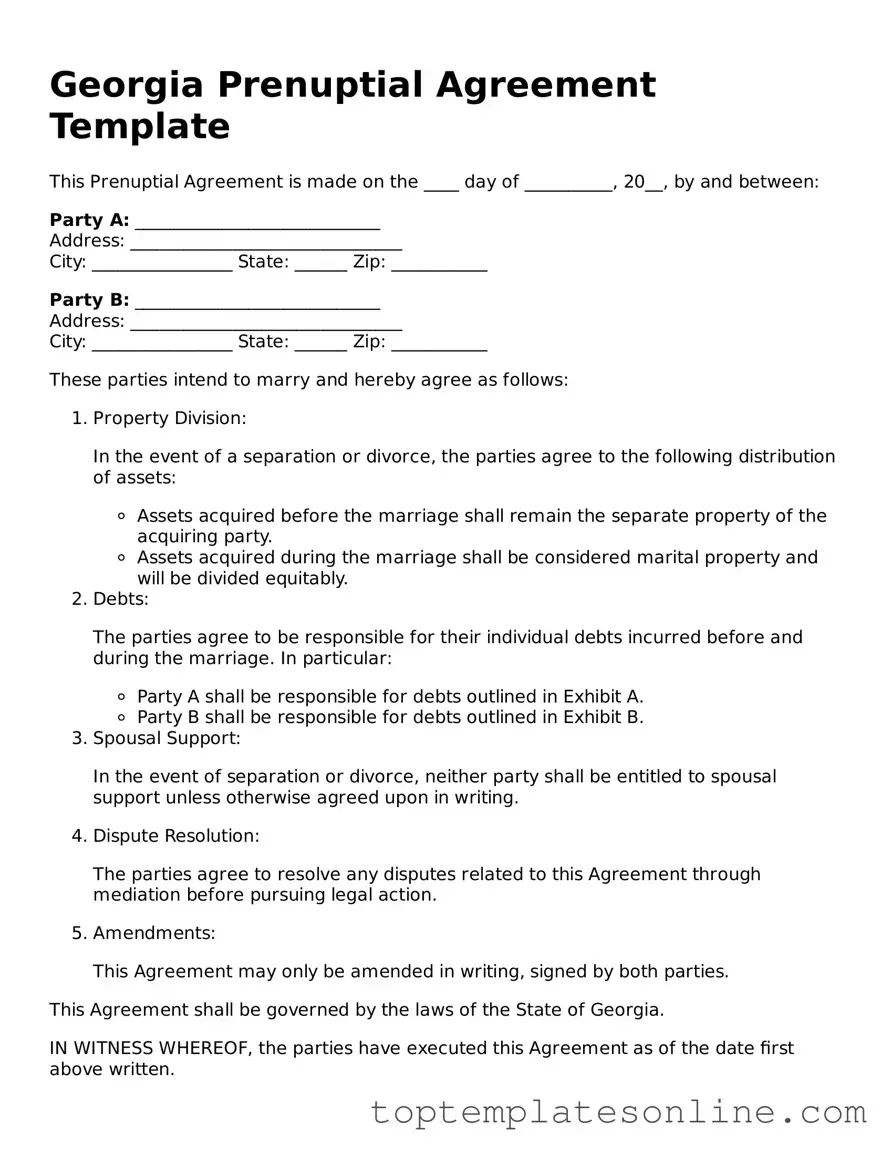Blank Prenuptial Agreement Template for Georgia State
A Georgia Prenuptial Agreement form is a legal document that outlines the financial and personal rights of each spouse in the event of divorce or separation. This agreement helps couples clarify their expectations and protect their assets before tying the knot. Understanding how to create and execute this form can lead to a more secure and transparent marriage.
Customize Prenuptial Agreement Here
